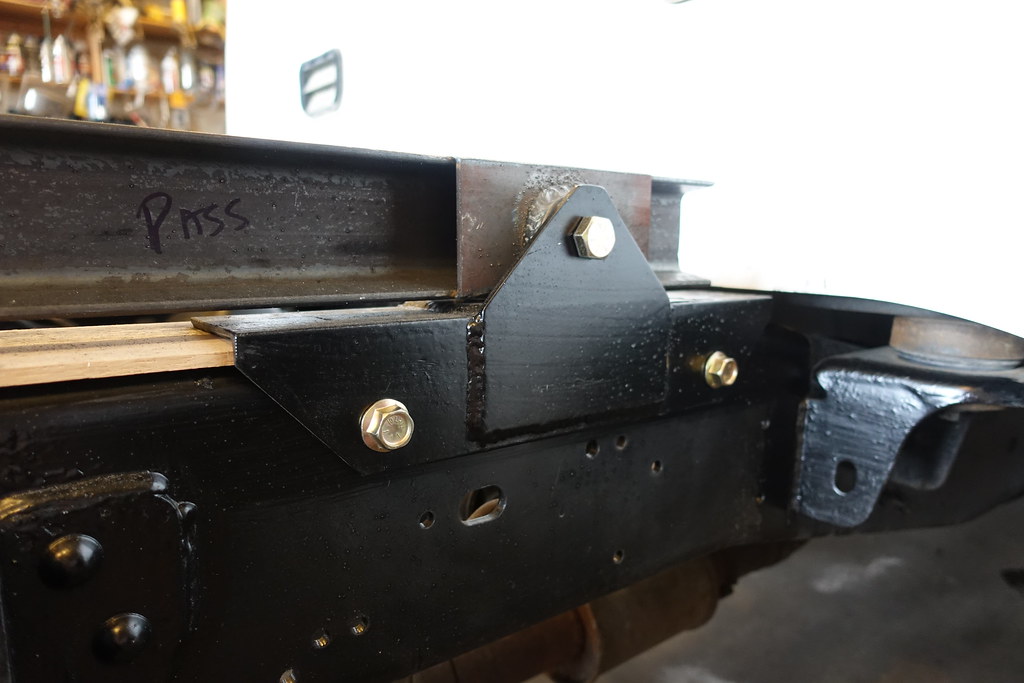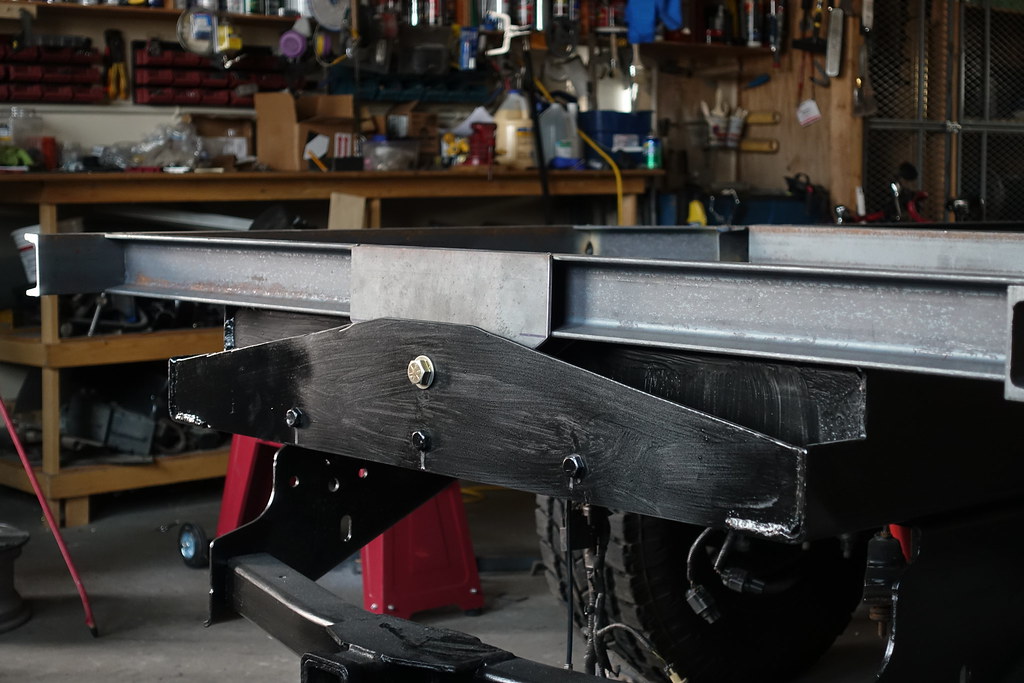Alloy
Well-known member
I don't think notching any 'beam' would be a good thing. It's always best to keep the top and bottom cord undisturbed. Also, it's never good to weld across the cord, along the cord is fine. Any change in the thickness of the cord is a stress riser and will start cracks and break. The longitudinal runners are the primary beam and carry all the load. It's better to leave them undisturbed as possible.
This is mild steel and the loading / strength is low. If it was aluminum or heat treated it is still possible but more precautions (doublers/gussets) are needed.






